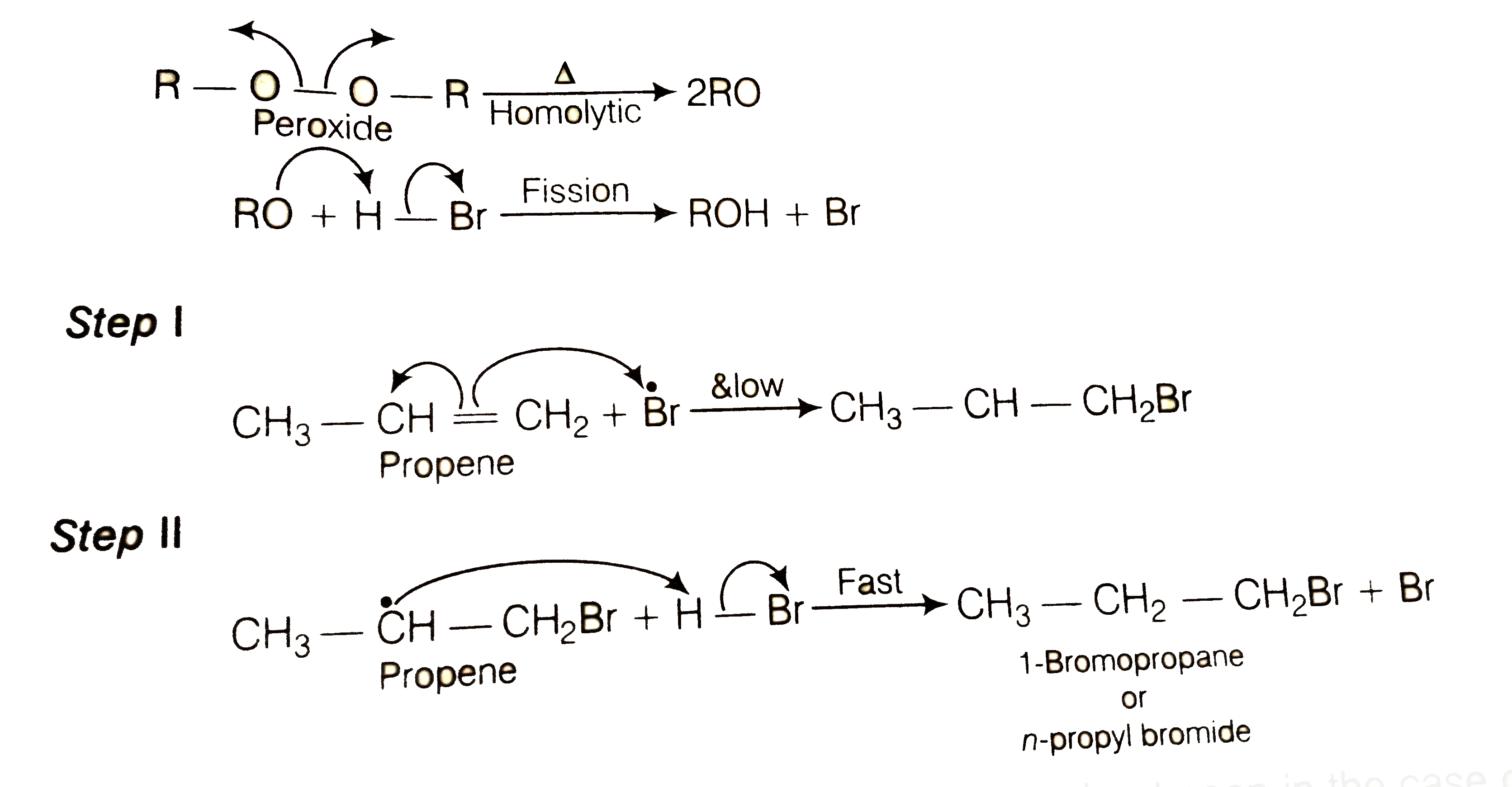In the presence of peroxide addition of HBr to propene takes place according to anti Markownikoff's rule but peroxide effect is not seen in the case of HCl and HI. Explain.
Video Solution
Text Solution
CH3−CH=CH2+HBrpropenePerioxide−−−−→CH3−CH2CH2Brn-propyl bormide
The mechanism of the reaction is

Perioxide effect is effective only in the case of HBr and not seen in the case of HCl and HI. This is due to the following reasons.
(i) H - Cl bond (103 kcal/mol) is stronger than H-Br bond (87 kcal/mol) H-Cl bond is not decomposed by the peroxide free redical whereas the H-I bond is weaker (71 kcal/mol) form iodine free radicals .
(ii) lodine free radical (I∘) formed as H - I bond is weaker bot iodine free radicalts readily combine with each other to form iodine molecules rather attacking the double bond .
|
Topper's Solved these Questions
- HYDROCARBONSBook:NCERT EXEMPLARChapter:HYDROCARBONSExercise:Assertion and Reason
Explore 4 Videos
- ENVIRONMENTAL CHEMISTRYBook:NCERT EXEMPLARChapter:ENVIRONMENTAL CHEMISTRYExercise:Long Answer Type
Explore 5 Videos
- HYDROGENBook:NCERT EXEMPLARChapter:HYDROGENExercise:LONG ANSWER TYPE QUESTIONS
Explore 8 Videos
Similar Questions
Knowledge Check
The addition of HBr to propylene takes place opposite to Markownikoff's rule in presence of:
AsunlightBhydrogen peroxideCplatinum catalystDnone of theseAddition of HBr to propene in presence of peroxide (antiMarkownikoff's additon) occurs when:
ABr+ first adds to propeneBBr− first adds to propeneCH+ first adds to propeneDBr. first adds to propeneThe addition of HCl in the presence of peroxide does not follow anti-Markownikoff's rule because
AHCl bond is too strong to be broken homolyticallyBCl atom is not reactive enough to add on the a double bondCCl combines with H to give back HClDHCl is reducing agent
In which case the product formed is in accordance of anti Markownikoff's rule?
View SolutionIn the presence of peroxide HCl do not give anti Markownikoffs addition to alkene because
View SolutionIn which of the following, addition of HBr does not takes place against markownikoff's rule or Anti-Markownikoff addition of HBr is not observed for
View SolutionIn which of the following, addition of HBr does not take place against Markownikoffs rule or Anti-Markownikoff addition of HBr is not observed for
View SolutionIn the presence of peroxide, hydrogen chloride and hydrogen iodide do not give anti-Markovnikov's addition to alkenes because:
View Solution
